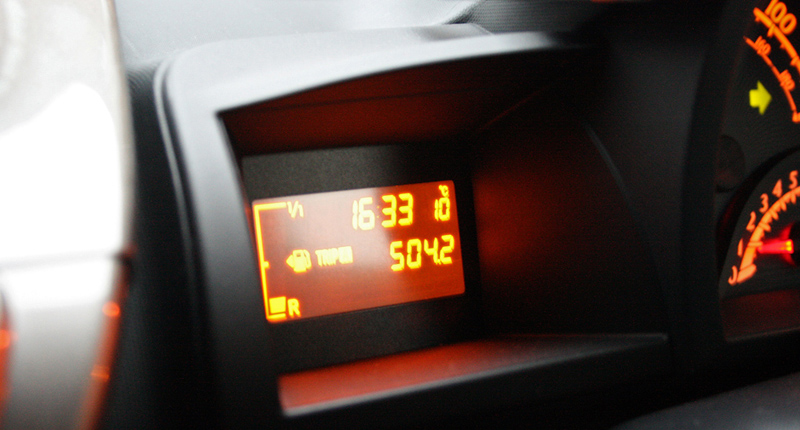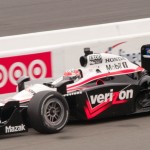MTN South Africa has once again emerged as the country’s top-performing mobile network, securing the highest score in the Q2 2025 MyBroadband Network Quality…
Who needs hypermiling? 5 ultra-simple ways you can save fuel

Virtually everyone who pays for fuel (that’d be most of us, then) is keen to make each precious tank of petrol or diesel last as long as physically possible.
Some motorists, of course, take this obsession to ludicrous lengths, attempting to, say, decrease their vehicle’s rolling resistance by keeping two tyres on the white line, or trying to reduce the car’s aerodynamic drag by drafting (read “tailgatingâ€) a large truck.
Of course, unless you’re taking part in a hypermiling contest – yes, the art of fuel-efficient driving has graduated into an awfully competitive “sport†– you needn’t go to such extremes. Why? Well, some of these techniques (such as engine-off coasting, drafting and the over-inflation of tyres) are downright dangerous or utterly illegal. And most people don’t have the sort of time or dedication needed to truly “hypermile†anyway.
No, the average driver would benefit greatly from simply making a few small adjustments to his or her driving style and following one or two of the tips outlined below. You’re unlikely to better your vehicle’s claimed fuel economy figure (read more on that here), but you’ll undoubtedly save some cash each and every month.
But remember, always be a considerate driver: it’s entirely possible to drive in a highly fuel-efficient manner without needlessly holding up other road-users. Nobody likes to be stuck behind an excruciatingly slow driver, after all.
So, here are our five tips.
1. Learn precise throttle control
Your car’s accelerator isn’t an on/off switch. When you pull away from a stop or accelerate out on the open road, use the least amount of throttle possible to get the job done. Smooth, gradual acceleration is the order of the day – it may sound obvious, but this delicate approach is far more efficient than simply mashing the loud pedal and leaving everyone else in a cloud of tyre smoke (and unburnt fuel).
How do you master accurate throttle control? Well, you can make your life a whole lot easier by simply kicking off those thick-soled shoes – that means no ridiculous heels or wedges, ladies – and slipping on the type of footwear that actually allows you to feel the pedals (some people, the author included, find that they are able to exercise greater pedal control when barefoot, although in certain parts of the world shoeless driving is illegal). From there, it’s merely a case of being clever with your right foot, listening to the car’s engine and watching that tachometer needle.
2. Reduce your vehicle’s weight
Weight is the sworn enemy of fuel efficiency. If your vehicle is an automotive butterball, its engine will be forced to work excessively hard (and thus burn obscene amounts of fuel) for minimal reward. So, how do you make your ride lighter? Crack open the luggage compartment and ask yourself some tough questions: Do you really need to be lugging around that musty set of golf clubs that last saw the light of day back when the Discman was cool? And what about that sawn-off shotgun and baseball bat?
Get rid of anything and everything that’s not essential (we’d advise keeping the spare wheel though). The same ruthless approach should be applied to the random junk that’s likely scattered throughout the cabin (on the back seat, in the door bins, in the cubby-hole, etc.). If you have roof-racks or a bike-rack fitted but don’t use them often, remove these as well (this will also reduce drag). And remember that a full tank of fuel weighs quite a bit more than half a tank…
3. Be stingy with power-sapping ancillaries
Modern cars boast all sorts of nifty features capable of making the lives of occupants rather more comfortable. But most of these systems require the generation of extra energy, placing increased load on the engine and thus burning more fuel. So, whenever possible, try not to use power-sapping electrical ancillaries such as heated seats and loud audio systems. Of course, air-conditioning is the most notorious of them all.
Not prepared to give up your air-con (nobody wants to arrive at their destination dripping with sweat, after all)? Well, try parking in the shade on particularly warm days, so that you won’t have to return to a stifling hot cabin. And if you simply can’t resist hitting the magical A/C button, at the very least set the system to recirculate and restrict the fan to its lowest setting. If you’re travelling relatively slowly (and thus don’t have to worry about creating drag), it’s perfectly acceptable to drop a window or two.
4. Anticipate changes in traffic
Generally speaking, the more cars you have to share the road with at any given time, the worse your fuel consumption. But you can minimise the damage by learning to anticipate, plan and react to various situations (i.e. driving defensively). Use the least amount of throttle and braking possible and try to time the traffic lights so that you seldom have to come to a complete stop.
Slow down by backing off the accelerator early rather than slamming on the brakes late. In-gear coasting is another handy technique that can make a marked difference in the efficiency of most cars. You see, modern fuel-injected engines simply cut off the fuel supply to the engine when coasting in-gear, leaving the momentum of the vehicle to keep it ticking over. Thus, this technique (in a high gear) is both more efficient and safer that coasting in neutral, which is basically the same as idling.
5. Don’t neglect vehicle maintenance
A car that isn’t running smoothly — for pretty much any reason — will burn more fuel than if it were purring like a kitten. Scheduled maintenance is crucial (try to stick to manufacturer recommendations) in the quest for efficiency, and should cover everything from regular fluid and filter changes to general engine tune-ups.
Over and above routine servicing, make sure you keep a close eye on tyre pressures. Again, stick to manufacturer recommendations here, since under-inflated tyres cause unnecessary drag, while over-inflated tyres can bring about increased wear or even loss of traction. Also, make sure your wheels are properly aligned and balanced.
Bonus tip: The ultimate method of saving fuel? Simply drive less…
Image: Newspress

